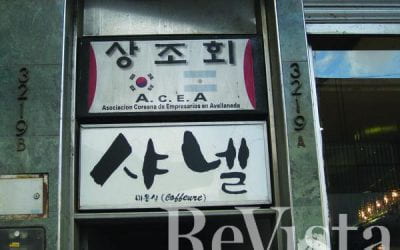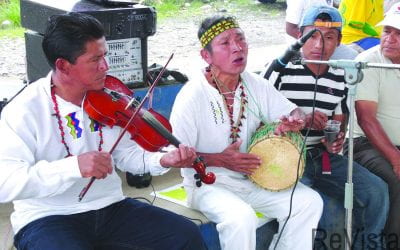Energy Innovation Ecosystems in Rural Mexico
Renewable Energies Program is making a difference in rural Mexico by engaging universities and local indigenous communities throughout the country to focus on the challenges of sustainable energy. Almost three hundred university professors and researchers have proposed innovation ecosystems for 93 renewable energy and energy efficiency projects that were developed and funded.
The program created 953.3 MW of wind energy, 512 MW of photovoltaic energy, 1.36 MW of biomass electricity, 40 million liters of ethanol/year, 7.2 million liters of biodiesel/year, and 9 million liters of bio-jet fuel/year. This project, which received the 2017 APEC ESCI Best Practices Award, is described in a documentary and casebook.
The program proved that shifting away from thinking in terms of centralized investments with low return on invested capital (ROIC), in favor of high-impact, economically resilient, national renewable energy and energy-efficiency projects, results in reproducible local innovation ecosystems with a much higher, more resilient, and more equitable ROIC. Rural indigenous communities and rural universities can provide large-scale renewable energy sources by democratizing access to expertise and financing. This creates opportunities that narrow the gap between the two Mexicos, the rural and the urban one, and provides a model of social innovation particularly relevant to countries facing rapid urbanization. To formulate ways to replicate this program, we are meeting now with Mexico’s ministers of economy and social development.
We found that indigenous communities in rural Mexico can bring their natural and social capital to engage in equitable ways with worldwide systems. This includes global financial, social and environmental metrics, as well as intellectual capital. Such engagement can lead to large-scale carbon emission reduction through renewable energy and energy efficiency; provide equitable access to energy efficiency and renewable energy; and generate local economic wealth.
Traditionally, rural indigenous communities in Mexico are completely disconnected from global investment markets and know-how because of issues of human development, economic connections, and isolated social and political structures within Mexico. We asked ourselves what kind of organizational form could match these unmet needs with their natural and social capital—underutilized resources in the modern world?
We first had to take a look at how national investments in energy and agricultural industries generally behave and then examine an alternate framing that highlighted new possibilities, and how it worked in Mexico.
Observed Behavior. In many countries, recent development of new energy sources requires very high economic investment and comes with very high social and natural costs. While investing in new energy sources might be “the right thing to do,” it is very expensive, achieving low social impact and poor economic return. Lands available for energy and agricultural developments belong directly or indirectly to rural farmers and/or indigenous populations, which brings another level of social interactions which, if not treated correctly, becomes a factor for tension instead of social change.
Traditional Frame. National energy investments usually focus on the return on invested capital (ROIC)—economic capital invested and the economic costs incurred. Social and natural risks and damages are labeled as “externalities,” thus avoiding any negative impact on a project ROIC. This framing leads to federal investments in large-scale energy sources driven by large firms and governmental agencies in major urban centers.
Generally speaking, the resource-poor rural universities transfer encyclopedic knowledge and obsolete technical skills with low practical social impact to the students, lacking the experimental pedagogic component to resolve local issues. The social-capital-rich indigenous communities are poor in the financial and intellectual capital to exploit their wealth in natural human capital.
Alternate Frame. Another way of framing these investments, however, is to connect rural communities rich in social and natural capital and local institutions rich in intellectual and human capital with global markets willing to de-risk their capital investments, in one ecosystem. Such connections seem to achieve greater impact, lower risk and higher resilience with these investments. This approach reframes economic costs and externalities as social and natural capital. An analysis of the ecosynomics—the social science of the agreements that guide human interaction—of these underlying agreements shows how participating faculty were able to integrate social, natural, intellectual, and economic capital in energy-innovation ecosystems within their communities, driving wealth creation for future generations.
Fall 2018, Volume XVIII, Number 1
Francisco Acuña, Guillermo Cedeño, Ramon Sanchez, Leith Sharp, and John Spengler participated in the Harvard Applied Leadership in Renewable Energies Program. James Ritchie-Dunham served as a member of the Center for Health and Global Environment advisory board.
Related Articles
From Vendedor to Fashion Designer
English + Español
Korean immigrants in Latin America are shaping and developing fashion economies there. Upon arrival, Korean immigrants to Argentina and Brazil may have been lonely, isolated and confused…
Shared Sentiments Inspire New Cultural Centers
English + Español
In the early afternoon of January 3, 2018, in the mountainous village of Shicang, Zhejiang Province, China, firecrackers burst into the air and flags waved in the wind as a parade of Clan…
Evidence for Hope: Making Human Rights Work in the 21st Century
A Review of Evidence for Hope: Making Human Rights Work in the 21st Century Contemporary Human Rights and Latin America On September 5, 1921, Roscoe “Fatty” Arbuckle, Hollywood’s then best-paid star, attended a party in San Francisco’s St. Francis Hotel, drank...





